Course Overview
We extend a warm welcome to all students enrolled in WATS/CEWA 6840 - Ecohydraulics at Utah State University. While this site primarily serves our registered students, we’ve curated resources that hold value for a more extensive ecosystem management and restoration community. This includes practitioners, managers, stakeholders, and researchers alike.
In earlier iterations of this course, the curriculum was structured as a blend of fluvial hydraulics and ecohydraulics, with a heavier focus on fluvial hydraulics. However, the field of Ecohydraulics has evolved significantly since then, marking a significant milestone in the realm of aquatic science and ecosystem management. The emergence of pivotal textbooks such as “Ecohydraulics” by Pasternack (2011) and “Ecohydraulics: An Integrated Approach” by Maddock et al. (2013), along with the establishment of the Journal of Ecohydraulics was established (Kemp & Katopodis, 2016), and the biennial convening of the International Symposium of Ecohydraulics, now in its 12th iteration, bear testament to the vibrant and dynamic nature of this field.
We are excited to embark on this journey with you as we explore the ever-expanding horizons of Ecohydraulics. Whether you are a student charting your academic course or a professional navigating the currents of ecosystem management, we are confident that this course will provide valuable insights and resources to enhance your understanding and contribute to your success.
Welcome aboard, and let’s navigate the fascinating world of Ecohydraulics together!
Syllabus
This class is offered every alternate spring, with the next planned sessions for Spring 2024 and 2026. We understand that this schedule may not align with everyone’s availability. For students whose timelines do not coincide with our regular offerings, we offer the flexibility to access our online online lectures and assignments, allowing you to engage in self-paced study.
Organization of this Course
 As we designed this graduate course within the Department of Watershed Sciences, we took into consideration our diverse audience of students, each coming from distinct academic backgrounds:
As we designed this graduate course within the Department of Watershed Sciences, we took into consideration our diverse audience of students, each coming from distinct academic backgrounds:
- Ecologists and Fisheries Biologists : Many of our students within the department may not have a strong foundation in hydraulics, open-channel flow, physics, calculus, or fluvial geomorphology.
- Hydrologists and Geomorphologists : Some students joining our course might excel in hydrology and geomorphology but may have limited exposure to fisheries and ecology.
- Civil Engineers : We also welcome civil engineers with a background in hydraulics and fluid mechanics. However, their exposure to fluvial hydraulics in natural systems, as well as their background in biology and ecology, may be limited.
We were worried about focusing on developing specific and narrow skillsets in running hydraulic models to drive ecohydraulic models, and giving students lots of experience in just a few specific flavor of ecohydraulic models that are typically used to look at fish habitat at reach-scales (e.g. resolving habitat at scale fish use it, but only spanning a reach). We decided instead to focus on a specific example that would expose students to the broader management and ecological questions of managing fish populations through studying their habitat (i.e. ecohydraulics). We felt this would expose students to a broader swath of concepts and literature, while giving some experience interpreting and running a large diversity of model types from different disciplines necessary to address a population-scale question, while leveraging the mechanistic insights of what are typically finer-scale lines of inquiry in ecohydraulics.
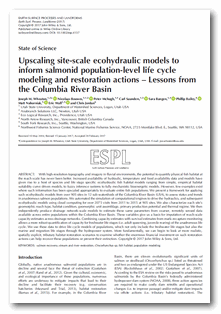 As such, we organized the syllabus around an in-depth review of a paper we (Wheaton et al. 2017) published on Upscaling Site-Scale Ecohydraulic Models to Inform Salmonid Population-Level Life Cycle Modelling and Restoration Actions – Lessons from the Columbia River Basin, based on our experience in running the Columbia Habitat Monitoring Program to explore whether ESA-listed anadromous salmon populations could be recovered through tributary habitat improvements.
As such, we organized the syllabus around an in-depth review of a paper we (Wheaton et al. 2017) published on Upscaling Site-Scale Ecohydraulic Models to Inform Salmonid Population-Level Life Cycle Modelling and Restoration Actions – Lessons from the Columbia River Basin, based on our experience in running the Columbia Habitat Monitoring Program to explore whether ESA-listed anadromous salmon populations could be recovered through tributary habitat improvements.
Instruction Team
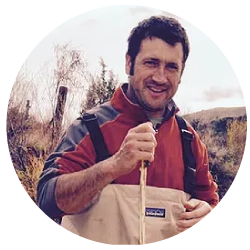
Nicolaas Bouwes2,1
Aquatic Ecologist, Adjunct Professor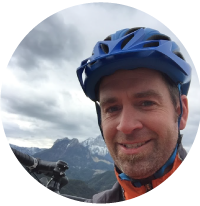
Joseph Wheaton1,2
Professor of Riverscapes, EcogeomorphologistInstructor Affiliations
Canvas
For students enrolled, all course materials can be found on this site, whereas you will submit assignments, track your grades and engage in collaborations on our Canvas Course Pages:
References on this Page
- Kemp PS, Katopodis C. 2016. Introducing the Journal of Ecohydraulics: fundamental and applied research on the road to transdisciplinarity. Journal of Ecohydraulics 1 : 1–4. DOI: 10.1080/24705357.2016.1259139.
- Maddock I, Harby A, Kemp P, Wood PJ (Editors). 2013. Ecohydraulics: An Integrated Approach . John Wiley & Sons: Chichester, UK. 464 pp.
- Pasternack GB. 2011. 2D Modeling and Ecohydraulic Analysis. Createspace: Seattle, WA. 168 pp.
- Wheaton JM, Bouwes N, McHugh P, Saunders WC, Bangen SG, Bailey PE, Nahorniak M, Wall CE and Jordan C. 2017. Upscaling Site-Scale Ecohydraulic Models to Inform Salmonid Population-Level Life Cycle Modelling and Restoration Actions – Lessons from the Columbia River Basin. Earth Surface Processes and Landforms. DOI: 10.1002/esp.4137.
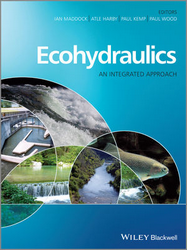
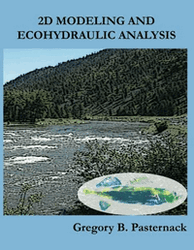
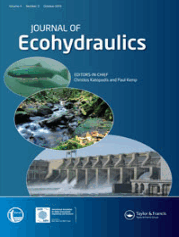
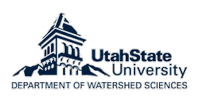
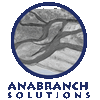
 Spring 2024 Canvas WATS/CEWA 6840 Course
Spring 2024 Canvas WATS/CEWA 6840 Course